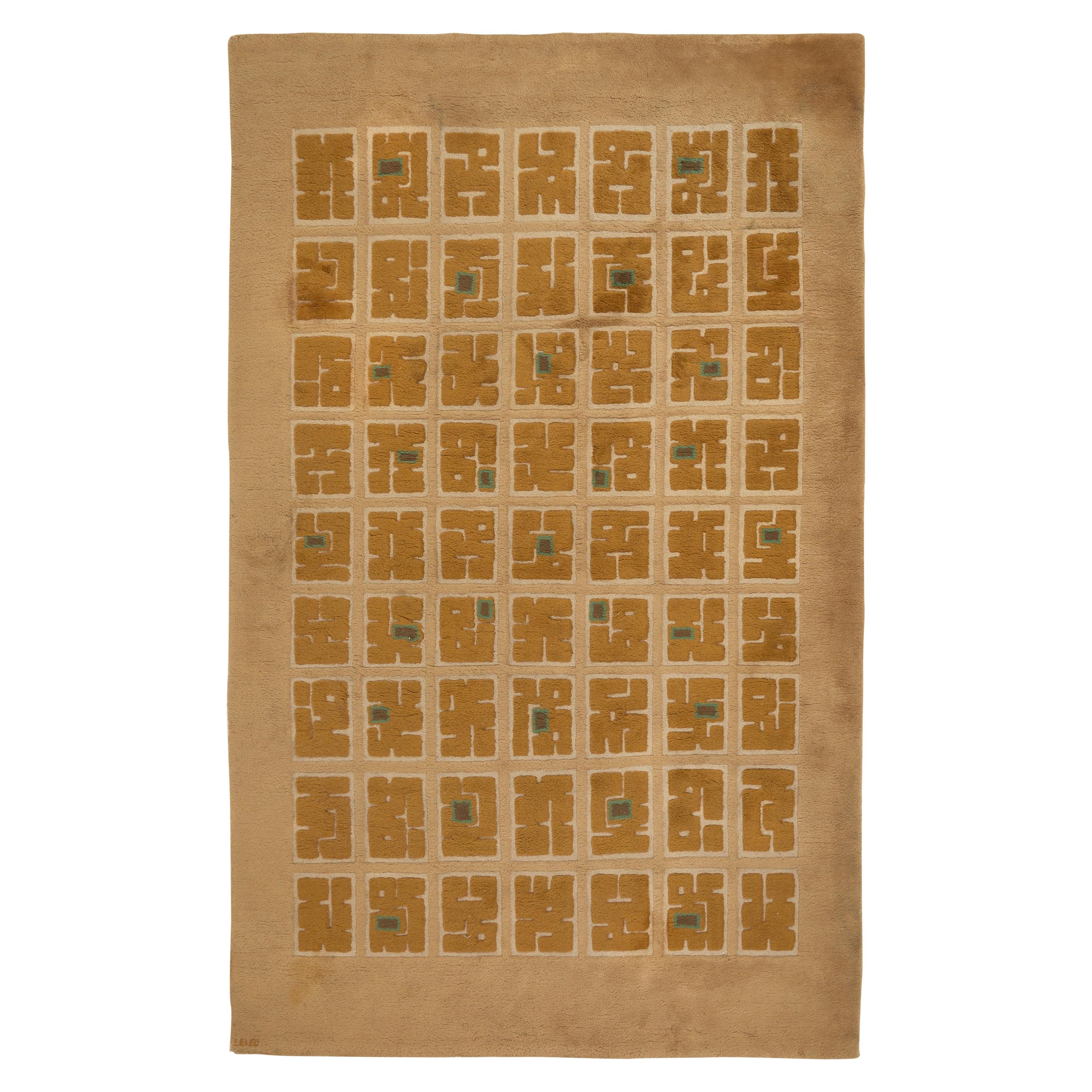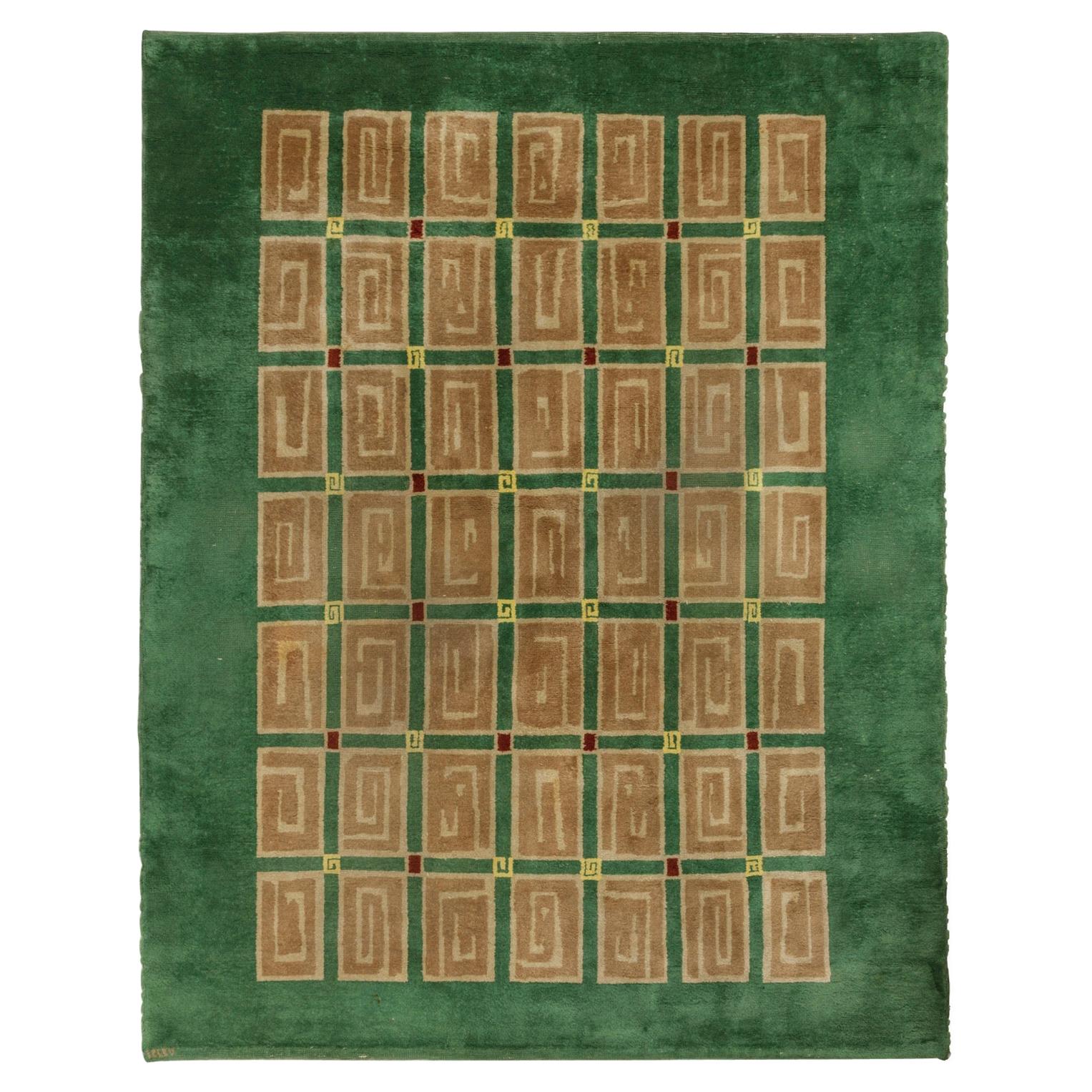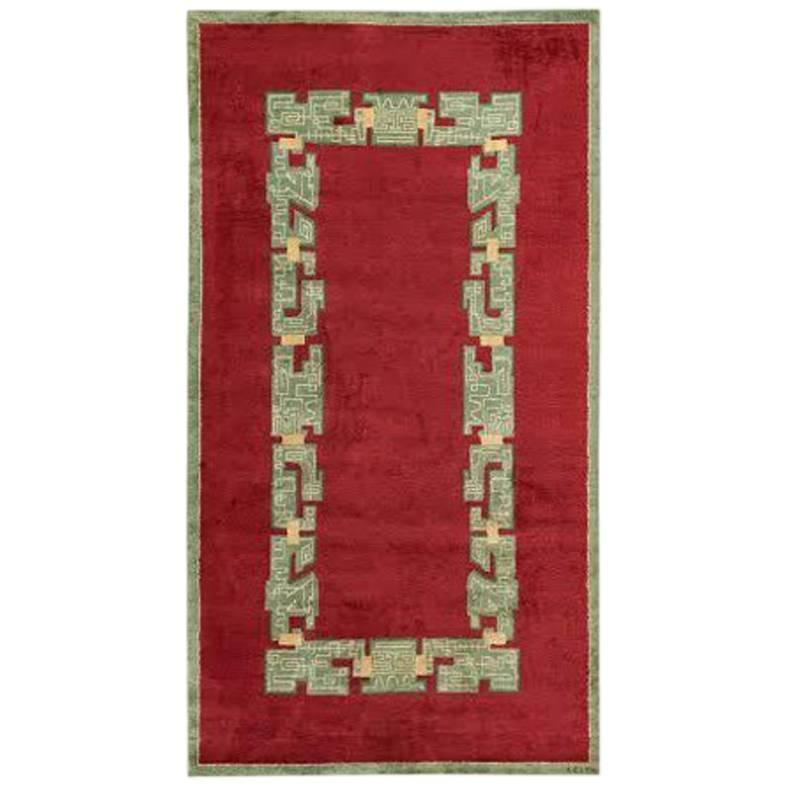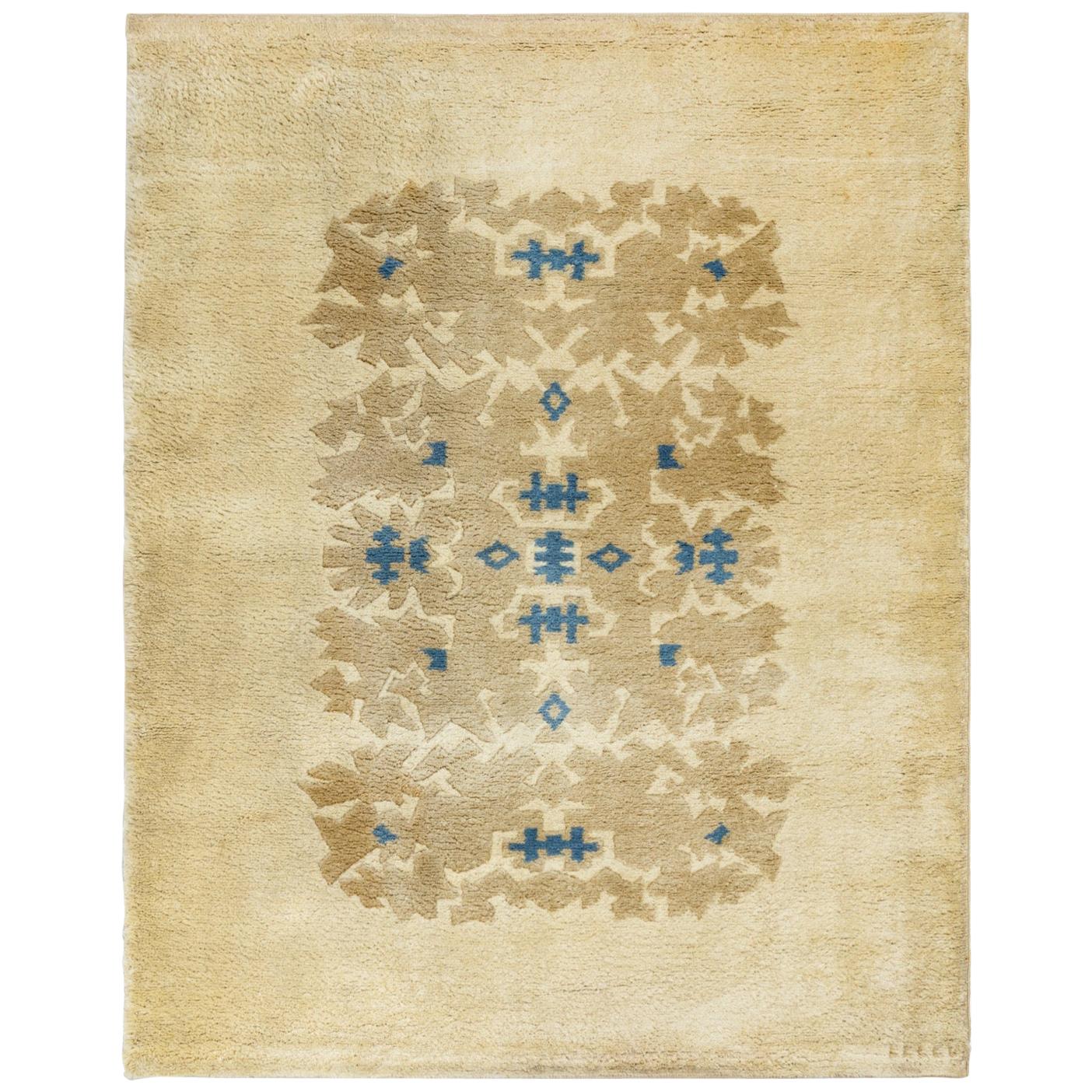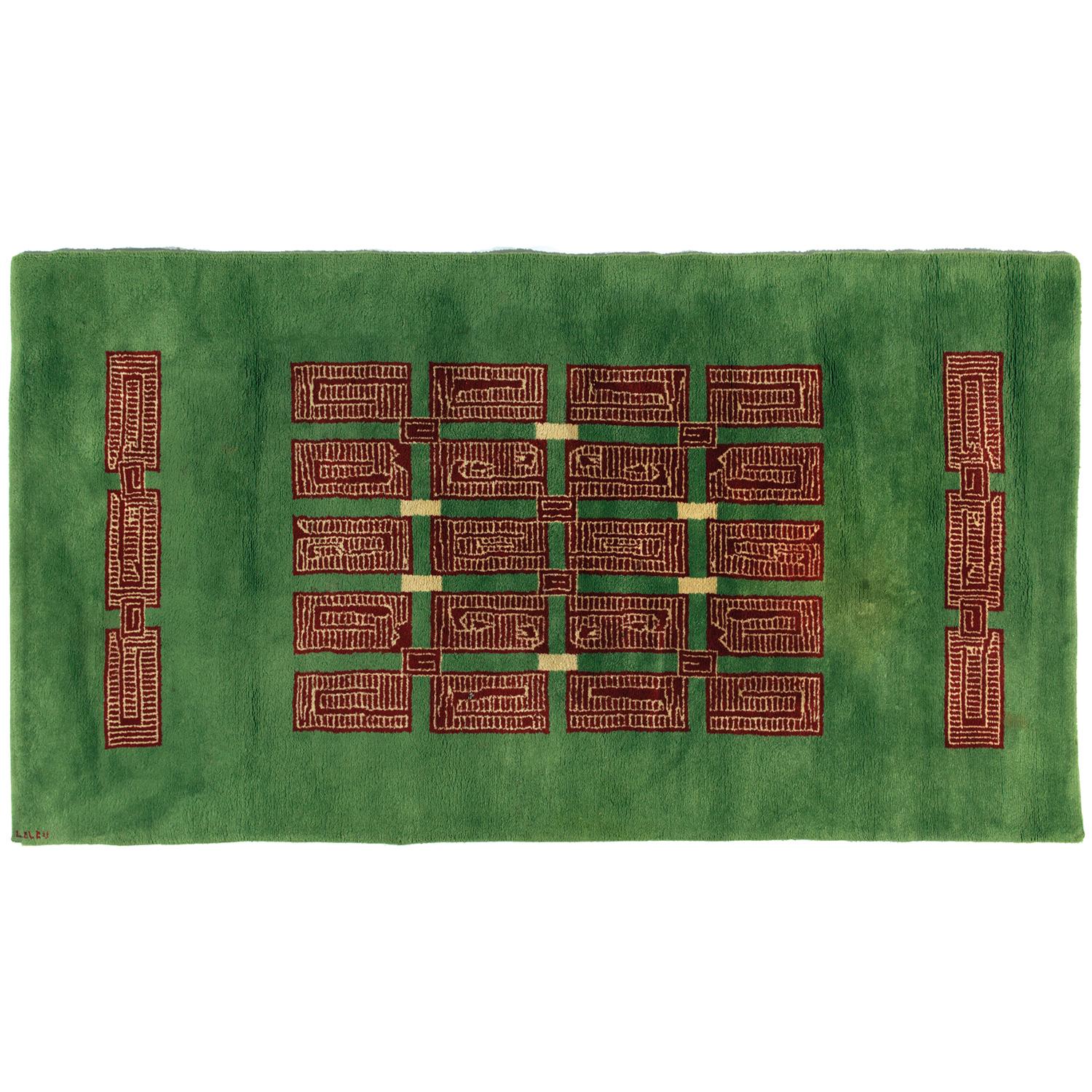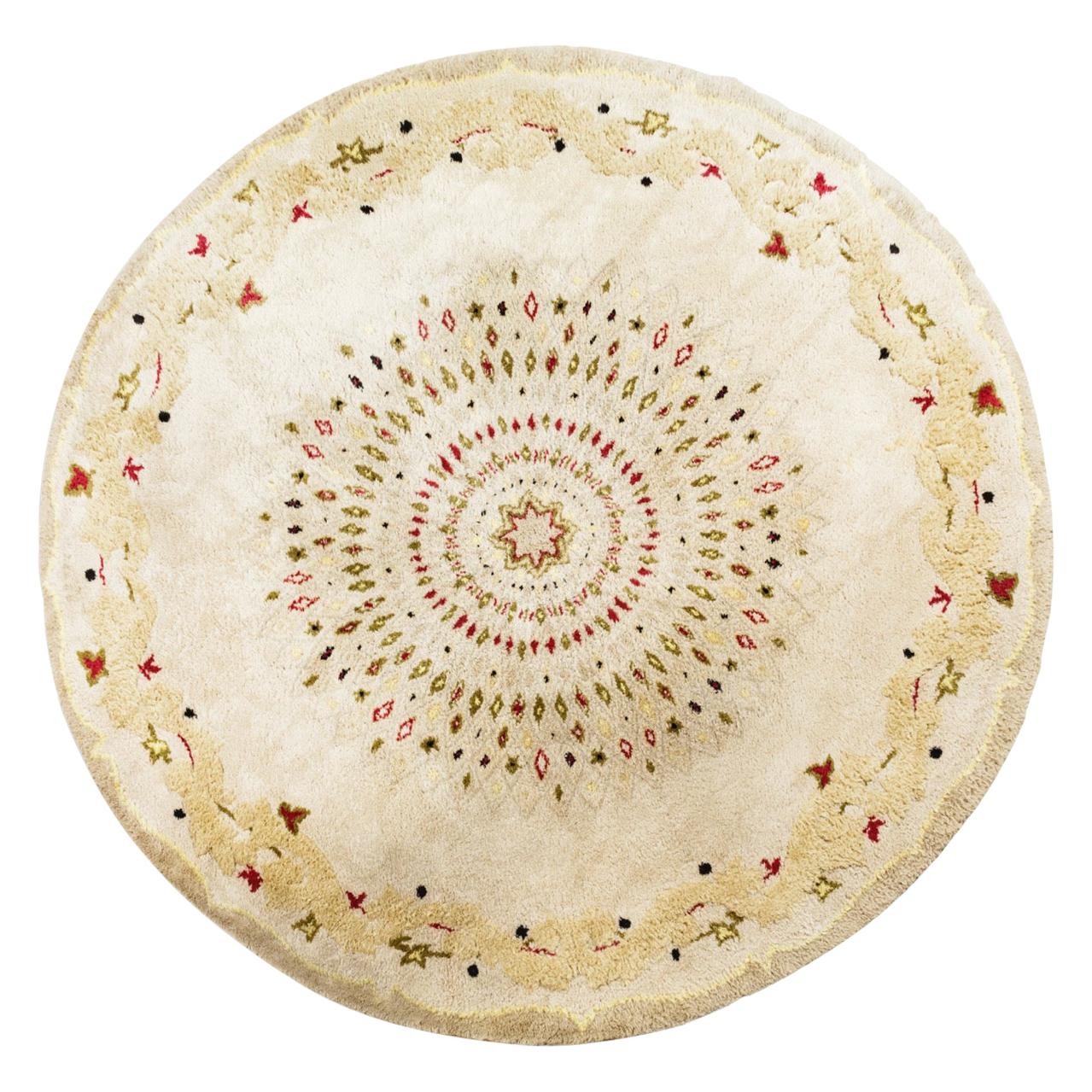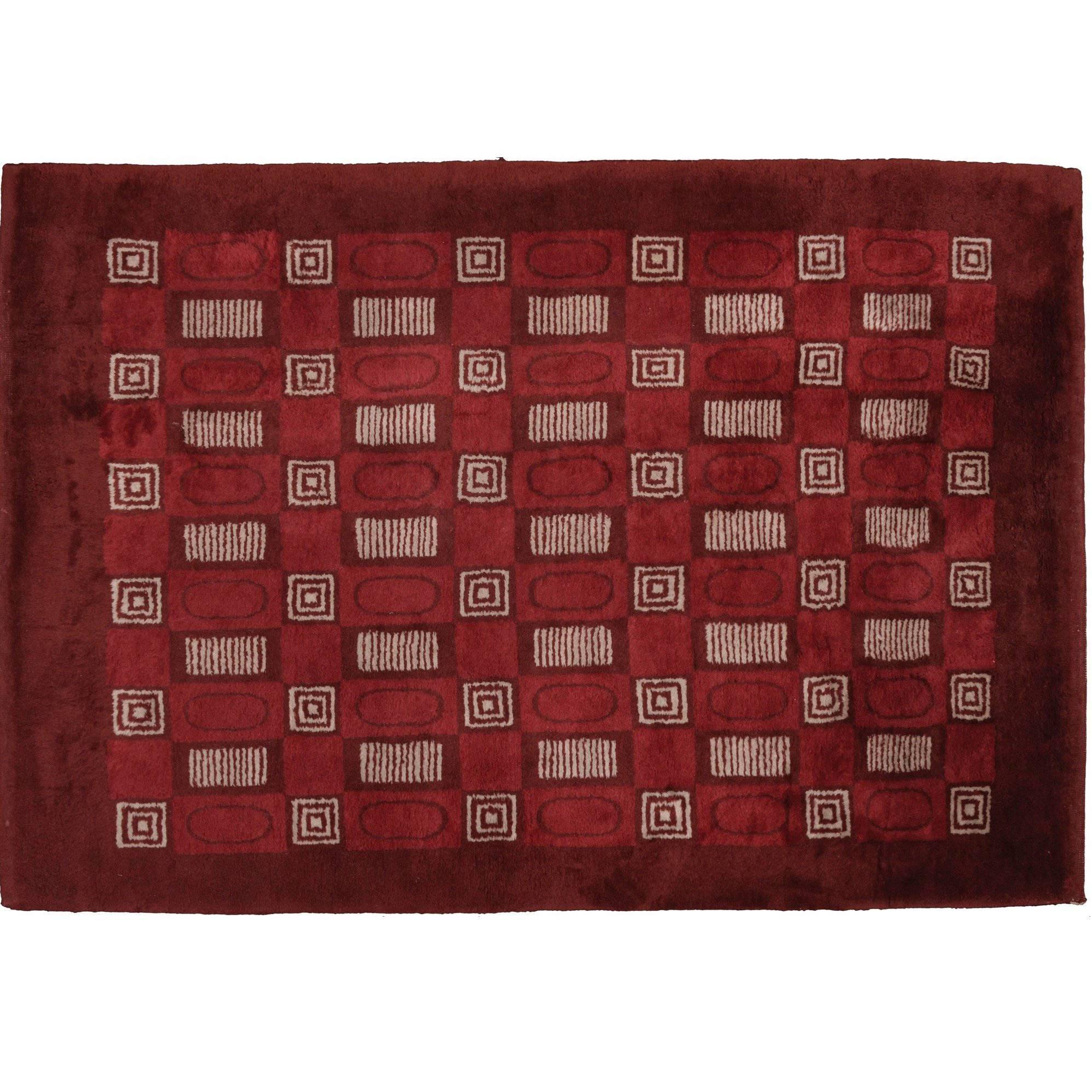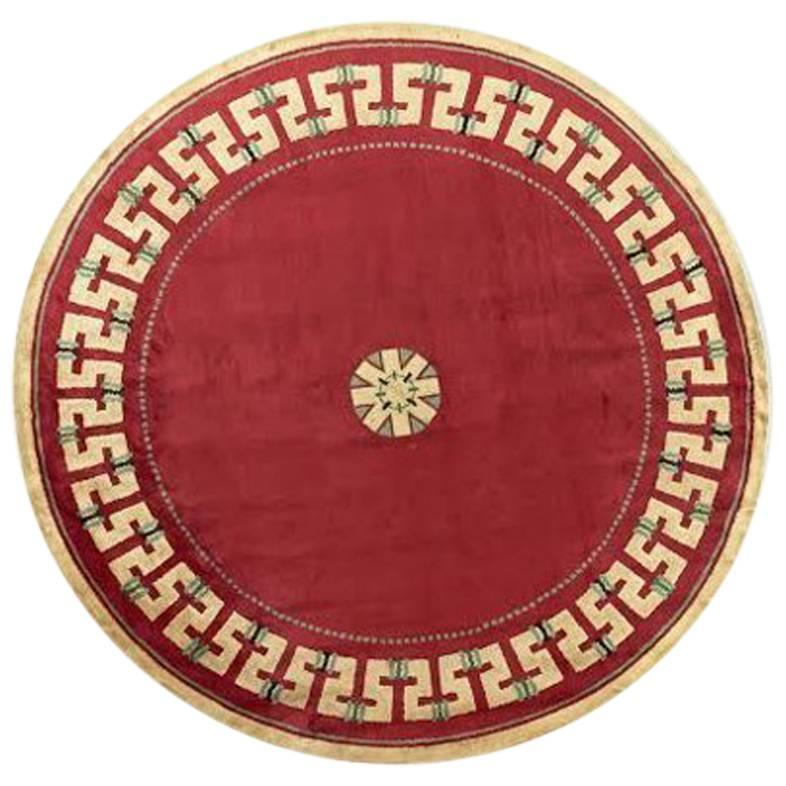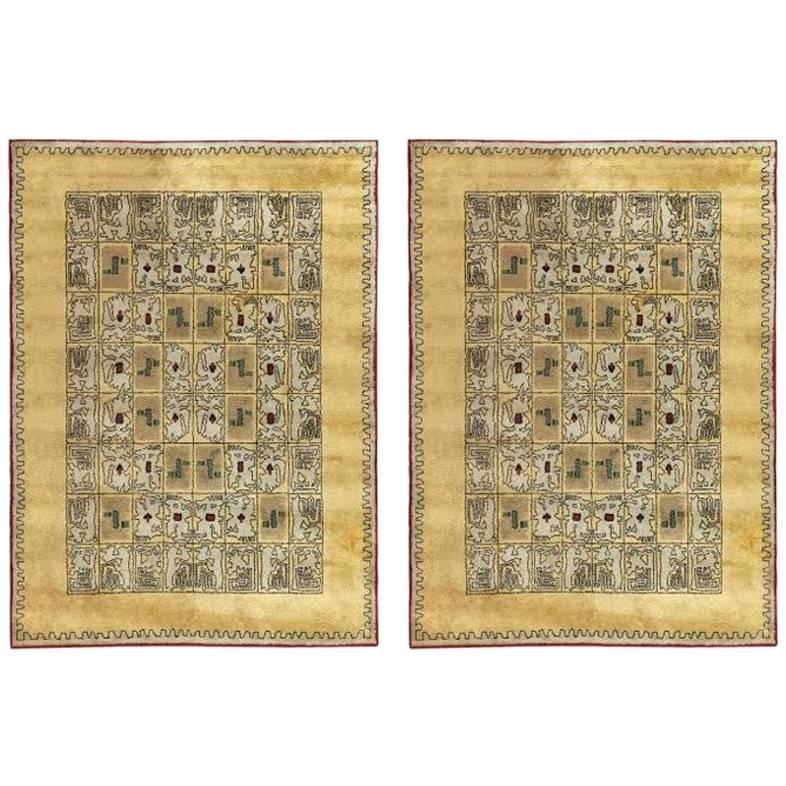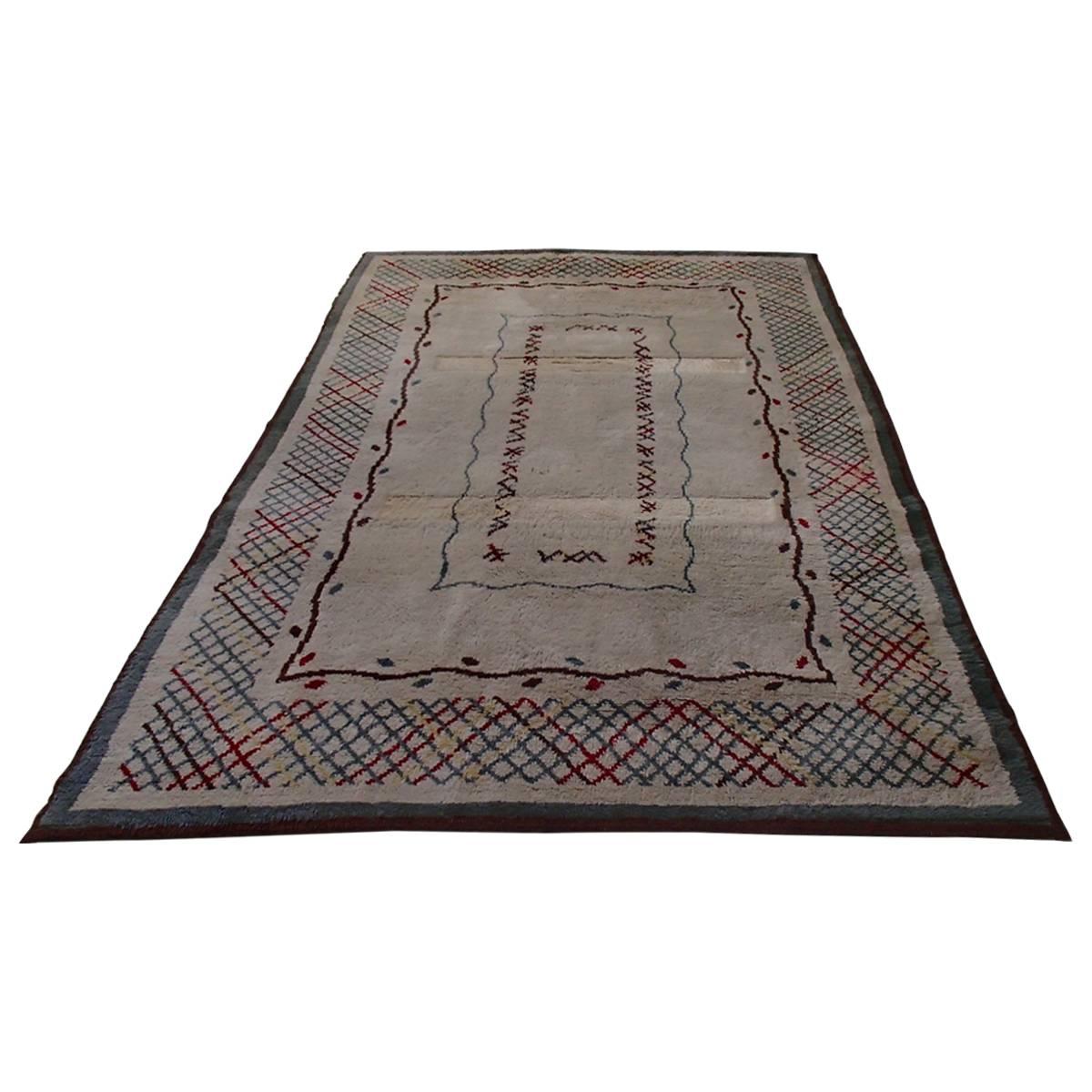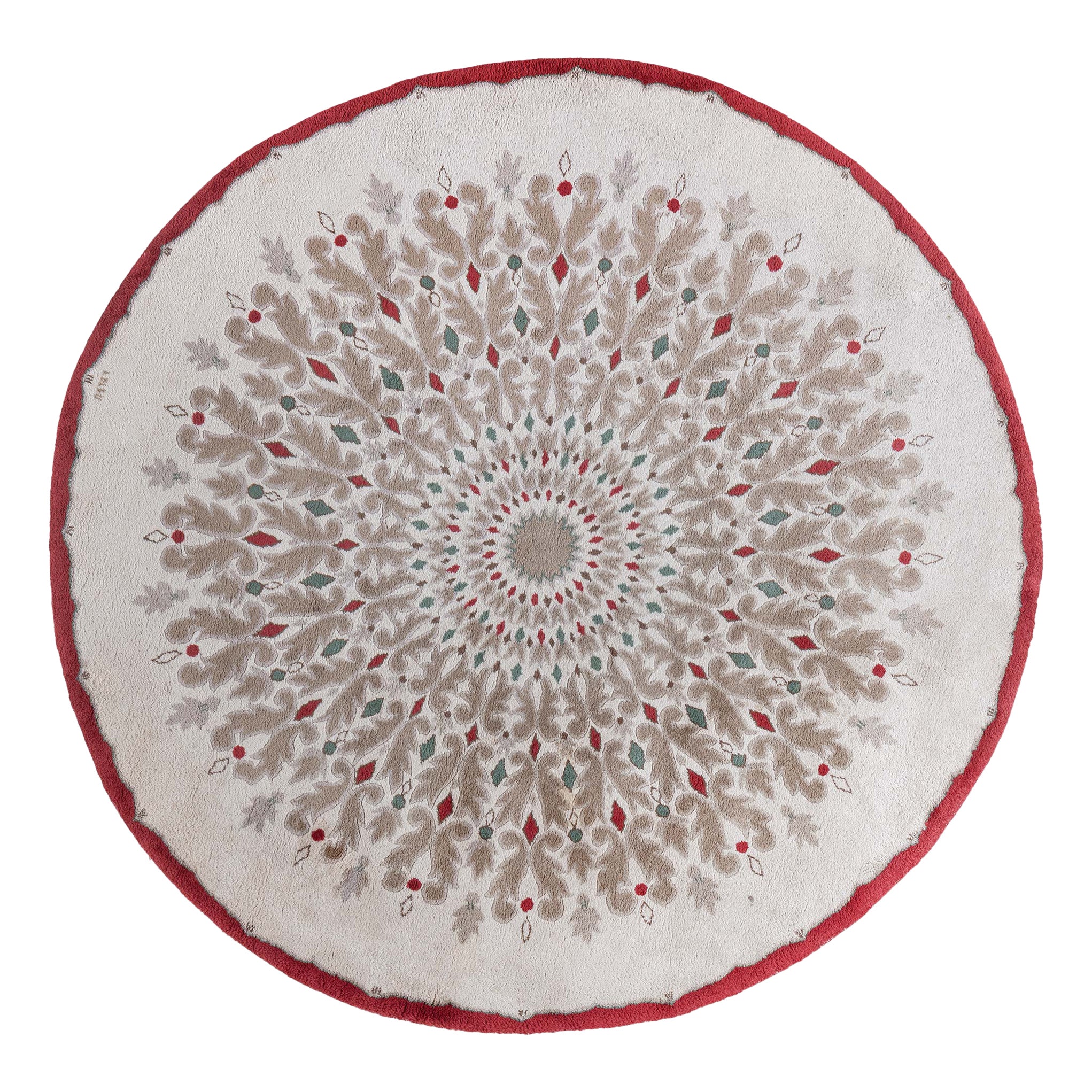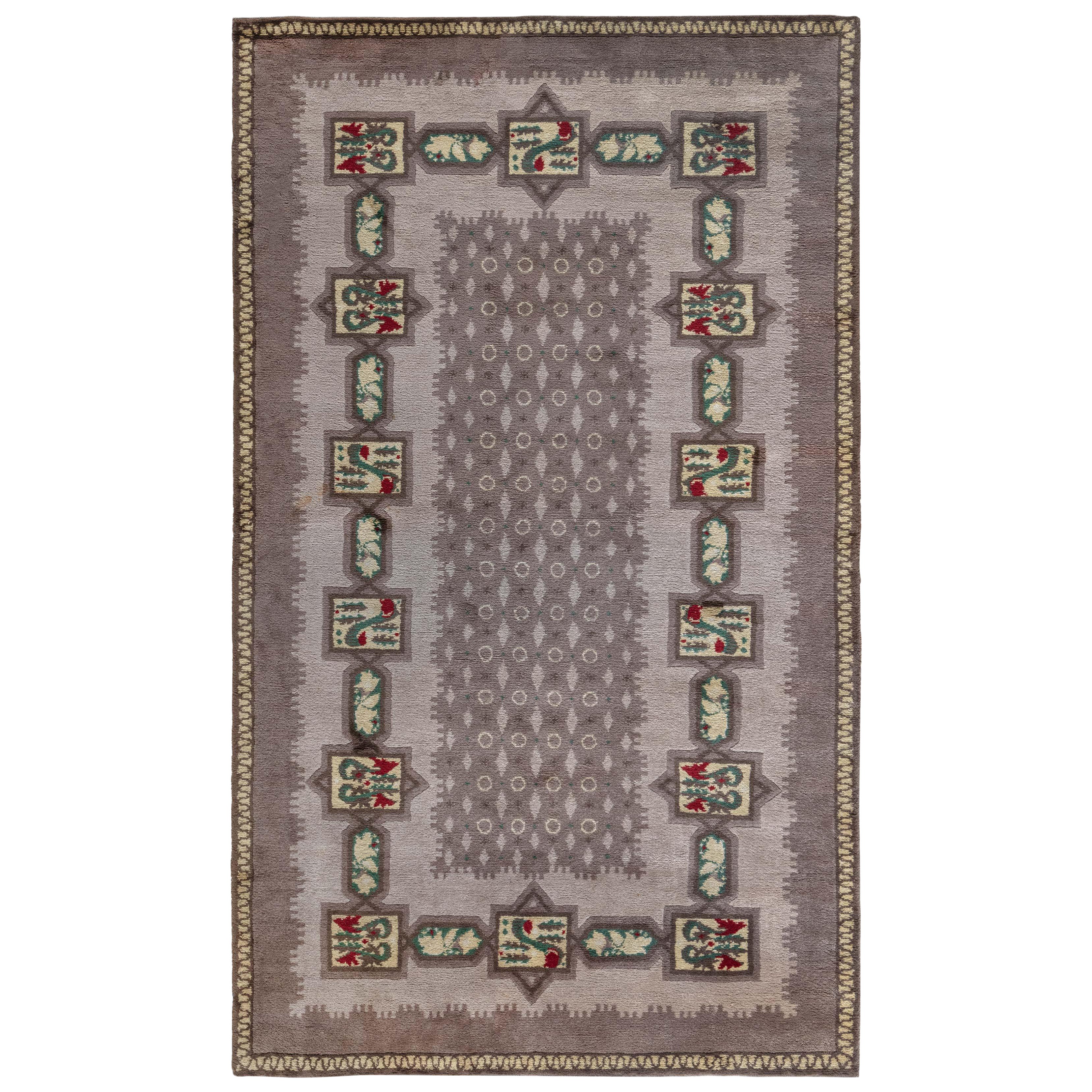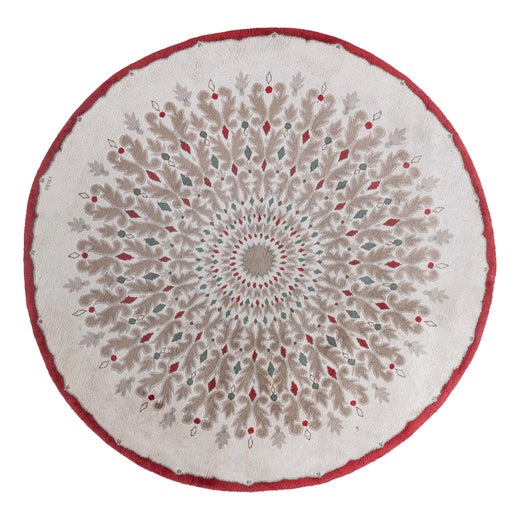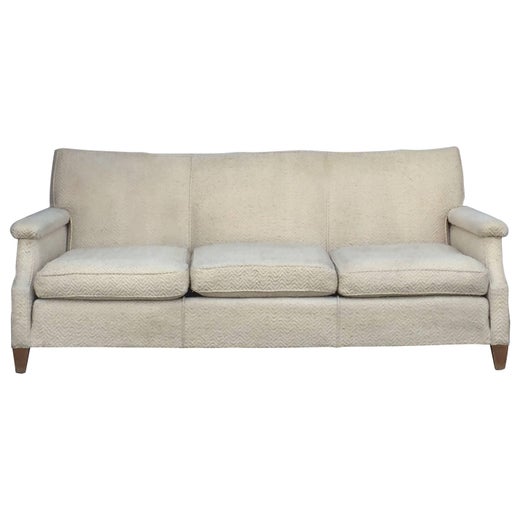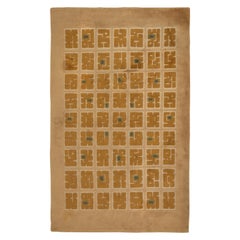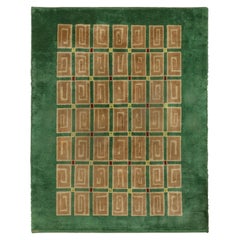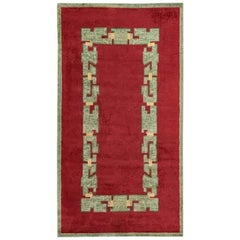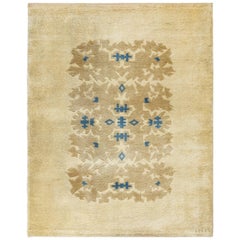
Rectangular Wool Carpet by Paule Leleu, 1950s
View Similar Items
Rectangular Wool Carpet by Paule Leleu, 1950s
About the Item
- Creator:Paule Leleu (Designer),Maison Leleu (Designer)
- Dimensions:Width: 79.53 in (202 cm)Length: 111.03 in (282 cm)
- Style:Mid-Century Modern (Of the Period)
- Materials and Techniques:
- Place of Origin:
- Period:
- Date of Manufacture:1950
- Condition:
- Seller Location:Paris, FR
- Reference Number:1stDibs: LU952010680151
Paule Leleu
The story of Art Deco is incomplete without the contributions of Paule Leleu. The daughter of celebrated French designer Jules Leleu, Paule carved out her niche in designing beautiful Western European rugs. A rich use of color and bold geometric patterns made Leleu’s rugs a quintessential representation of Art Deco style.
Leleu was born in 1906 into a family with a love of design. Her grandfather operated a painting business in Paris, which her father and uncle transformed into an interior design company. They grew it into an influential design studio, which was among the first to pivot to Art Deco when it became popular after World War I. The Leleu design studio won the top prize at the 1925 International Exhibition of Modern Decorative and Industrial Arts.
French designer Ivan da Silva Bruhns initially helmed the rug department of the Leleu firm. When he left the company in 1936, Paule Leleu took over. She expanded on da Silva Bruhns’s success and soon produced many award-winning designs.
Leleu instilled the Art Deco style into her hand-knotted rugs that featured simple linear motifs and decorative flourishes. In the 1940s, she began using floral patterns. Leleu always created her designs with her family company’s furniture in mind. Like that furniture, her later carpets also tended towards the minimalism of mid-century modern style.
Across her career as the chief rug designer at the Leleu design house, Paule Leleu is credited with more than 500 rug designs. The stunning statement pieces remain classics for today’s homes.
On 1stDibs, find Paule Leleu rugs and carpets as well as other home accents.
Maison Leleu
Jules Leleu founded Maison Leleu with his brother Marcel in Paris in 1910. The firm specialized in interior design projects and furnishings created in the era’s luxurious Art Deco style for residential and commercial spaces around the world. There were plush sofas, sleek walnut cabinets that featured marquetry and brass door pulls, and stately coffee tables with bases that terminated with substantial bronze sabots.
A designer and ensemblier, Jules was one of the key authors of the Art Deco movement. While he did not win the fame of such contemporaries as Émile-Jacques Ruhlmann and Jean-Michel Frank, Leleu had a longer career and was easily their peer in the conception of trim, refined furniture forms and in the use of opulent materials — from lacquer and ivory to sharkskin and exotic woods — that were keynotes of haute Art Deco design.
Marcel and Jules’s clientele included President Eisenhower, the Ecuadorian ambassador to France and Prince Pierre of Monaco, who favored Maison Leleu’s Directoire-inspired designs. Jules’s children, André, Paule and Jean worked at the family business expanding their reach to include projects that encompassed luxury passenger ship interiors and even so far as the United Nations office in Geneva, Switzerland, as well as the private residences of royalty. Maison Leleu would embrace many of the starker forms of modernism after the 1940s, as well as new materials such as artificial lacquer and plastics (then considered cutting-edge rather than cheap).
Maison Leleu closed its doors, somewhat mysteriously, in 1973.
Alexia, Jean’s granddaughter, pursued a career in pharmaceuticals but her family history always nagged at her. Why would such a successful company close its doors and walk away from it all? By meeting with her great-grandfather’s secretary, Françoise Siriex, Alexia discovered a contract between Maison Leleu and the Shah of Iran from 1969. Maison Leleu spent the subsequent three years designing and producing over 50 displays for an event that marked the anniversary of the founding of the Persian Empire, but in a devastating one-two punch, the Shah didn’t pay for the work and the Iranian Revolution put any hopes out of reach. To avoid bankruptcy, Maison Leleu disappeared.
As of 2018, Alexia has reignited the old flame and is restoring the company back to its former glory. With a strong focus on her heritage and qualities that rendered Maison Leleu exemplary — refinement and timeless design — the new Maison Leleu offers furniture, lighting and rugs and has secured partnerships with luxury brands Louis Vuitton and Cartier as well as Claridge’s Hotel.
One 1stDibs, find a collection of antique Maison Leleu seating, tables and storage case pieces.
You May Also Like
Vintage 1950s French Art Deco Western European Rugs
Wool
Vintage 1950s French Art Deco Western European Rugs
Wool
Mid-20th Century French Western European Rugs
Wool
Vintage 1960s French Art Deco Western European Rugs
Wool
Vintage 1960s French Art Deco Western European Rugs
Wool
Vintage 1950s French Art Deco Western European Rugs
Wool
